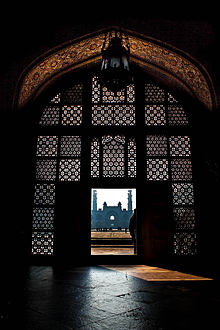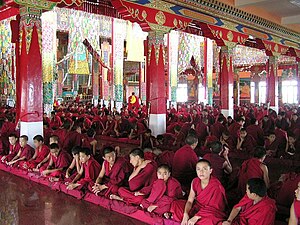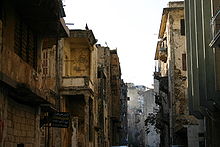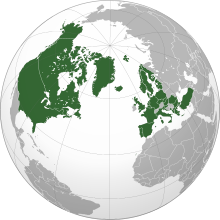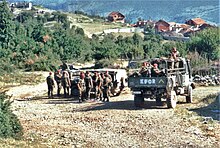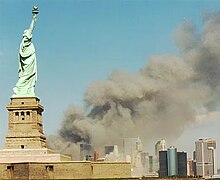With the 42nd Amendment of the Constitution of India enacted in 1976, the Preamble to the Constitution asserted that India is a secular nation. institutions to recognise and accept all religions, enforce parliamentary laws instead of religious laws, and respect pluralism. India does not have an official state religion. In matters of law in modern India, however, the applicable code of law is unequal, and India's personal laws - on matters such as marriage, divorce, inheritance, alimony - varies with an individual's religion. Muslim Indians have Sharia-based Muslim Personal Law, while Hindu, Christian and Sikh Indians live under common law. It is further complicated by the fact that many Hindu temples of great religious significance are administered and managed by the Indian government. The attempt to respect unequal, religious law has created a number of issues in India such as acceptability of child marriage, polygamy, unequal inheritance rights, extra judicial unilateral divorce rights favorable to some males, and conflicting interpretations of religious books.
Secularism as practiced in India, with its marked differences with Western practice of secularism, is a controversial topic in India. See also pseudo-secularism Supporters of the Indian concept of secularism claim it respects. Supporters of this form of secularism claim that any attempt to introduce a uniform civil code, that is equal laws for every citizen irrespective of his or her religion, would impose majoritarian Hindu sensibilities and ideals. Opponents argue that India's acceptance of Sharia and religious laws violates the principle of Equality before the law.
Secularism is a politically charged topic in India and often divides political factions. While there are many secular political parties which enjoy widespread support especially in Kerala, there are also parties that advocate the idea of India as a country for only one religious community. Complaints have been raised from different factions that secularism has been selectively applied in policy to suppress opposing religious views.
History
Indian religions are known to have co-existed and evolved together for many centuries before the arrival of Islam in the 12th century, followed by Mughal and colonial
era. To understand how, it is necessary to have an insight into how the
concept of secularism grew in India. The religion, practices and
beliefs of the Indus Valley Civilization
has received considerable attention from the view of identifying the
precursor of later Indian dharmic religions. There existed worship of
the great male god and a mother goddess; deification and veneration of
animals and plants; and the worship of many symbolic representations of
the world around. Consequently, religion was very accomodative and
without a rigid structure; it was polytheistic as well as agnostic,
henotheistic as well as panentheistic at the same time. This tolerance
towards and acceptance of other religious beliefs persisted in the dharmic religions
that followed. Hence the dharmic religions lack a proselytism
tradition. There is no belief in the superiority of their god. Quite
conversely, there are instances in religious texts like the Ramayana and
the Mahabharatha, wherein even the antagonist on the side of adharma
are shown to have a admirable traits, while Gods on the side of dharma
are shown as having fallacies. This encouraged a unique outlook of
questioning, open-mindness and acceptance in Indian religions.
Ellora caves,
a world heritage site, are in the Indian state of Maharashtra. The 35
caves were carved into the vertical face of the Charanandri hills
between the 5th and 10th centuries. The 12 Buddhist caves, 17 Hindu
caves and 5 Jain caves, built in proximity, suggest religious
co-existence and secular sentiments for diversity prevalent during
pre-Islamic period of Indian history.
Ashoka about 2200 years ago, Harsha about 1400 years ago accepted and patronised different religions.
The people in ancient India had freedom of religion, and the state
granted citizenship to each individual regardless of whether someone's
religion was Hinduism, Buddhism, Jainism or any other. Ellora cave
temples built next to each other between 5th and 10th centuries, for
example, shows a coexistence of religions and a spirit of acceptance of
different faiths.
There should not be honour of one’s own (religious) sect and condemnation of others without any grounds.
— Ashoka, Rock Edicts XII, about 250 BC
This approach to interfaith relations changed with the arrival of
Islam and establishment of Delhi Sultanate in North India by the 12th
century, followed by Deccan Sultanate in Central India.
The political doctrines of Islam, as well as its religious views were
at odds with doctrines of Hinduism, Buddhism and other Indian religions.
New temples and monasteries were not allowed. As with Levant, Southeast
Europe and Spain, Islamic rulers in India treated Hindus as dhimmis in exchange of annual payment of jizya
taxes, in a sharia-based state jurisprudence. With the arrival of
Mughal era, Sharia was imposed with continued zeal, with Akbar - the
Mughal Emperor - as the first significant exception.
Akbar sought to fuse ideas, professed equality between Islam and other
religions of India, forbade forced conversions to Islam, abolished
religion-based discriminatory jizya taxes, and welcomed building of
Hindu temples. However, the descendants of Akbar, particularly Aurangzeb,
reverted to treating Islam as the primary state religion, destruction
of temples, and reimposed religion-based discriminatory jizya taxes.
Akbar's tomb
at Sikandra, near Agra India. Akbar's instruction for his mausoleum was
that it incorporate elements from different religions including Islam
and Hinduism.
After Aurangzeb, India came into control of East India Company and the British Raj.
The colonial administrators did not separate religion from state, but
marked the end of unequal hierarchy between Islam and Hinduism, and
reintroduced the notion of equality before the law for Hindus,
Christians and Muslims. The British Empire sought commerce and trade, with a policy of neutrality to all of India's diverse religions.
Before 1858, the Britishers followed the policy of patronizing and
supporting the native religions as the earlier rulers had done.
By the mid-19th century, the British Raj administered India, in
matters related to marriage, inheritance of property and divorces,
according to personal laws based on each Indian subject's religion,
according to interpretations of respective religious documents by
Islamic jurists, Hindu pundits and other religious scholars. In 1864,
the Raj eliminated all religious jurists, pandits and scholars because
the interpretations of the same verse or religious document varied, the
scholars and jurists disagreed with each other, and the process of
justice had become inconsistent and suspiciously corrupt.
The late 19th century marked the arrival of Anglo-Hindu and
Anglo-Muslim personal laws, where the governance did not separate the
state and religion, but continued to differentiate and administer people
based on their personal religion.
The British Raj provided the Indian Christians, Indian Zoroastrians and
others with their own personal laws, such as the Indian Succession Act
of 1850, Special Marriage Act of 1872 and other laws that were similar
to Common Laws in Europe.
| “ | For several years past it has been the cherished desire of the Muslims of British India that Customary Law should in no case take the place of Muslim Personal Law. The matter has been repeatedly agitated in the press as well as on the platform. The Jamiat-ul-Ulema-i-Hind, the greatest Moslem religious body has supported the demand and invited the attention of all concerned to the urgent necessity of introducing a measure to this effect. | ” |
| — Preamble to Muslim Personal Law (Shariat) Application Act, 1937, | ||
Although the British administration provided India with a common law,
it's divide and rule policy contributed to promoting discord between
communities. The Morley-Minto reforms provided separate electorate to Muslims, justifying the demands of the Muslim league.
In the first half of 20th century, the British Raj faced
increasing amounts of social activism for self-rule by a disparate
groups such as those led by Hindu Gandhi and Muslim Jinnah; the colonial
administration, under pressure, enacted a number of laws before India's
independence in 1947, that continue to be the laws of India in 2013.
One such law enacted during the colonial era was the 1937 Indian Muslim
Personal Law (Shariat) Application Act, which instead of separating state and religion for Western secularism, did the reverse.
It, along with additional laws such as Dissolution of Muslim
Marriages Act of 1939 that followed, established the principle that
religious laws of Indian Muslims can be their personal laws. It also set
the precedent that religious law, such as sharia, can overlap and
supersede common and civil laws,
that elected legislators may not revise or enact laws that supersede
religious laws, that people of one nation need not live under the same
laws, and that law enforcement process for different individuals shall
depend on their religion. The Indian Muslim Personal Law (Shariat)
Application Act of 1937 continues to be the law of land of modern India
for Indian Muslims, while parliament-based, non-religious uniform civil
code passed in mid-1950s applies to Indians who are Hindus (which
includes Buddhists, Jains, Sikhs, Parsees), as well as to Indian
Christians and Jews.
Current status
The
7th schedule of Indian constitution places religious institutions,
charities and trusts into so-called Concurrent List, which means that
both the central government of India, and various state governments in
India can make their own laws about religious institutions, charities
and trusts. If there is a conflict between central government enacted
law and state government law, then the central government law prevails.
This principle of overlap, rather than separation of religion and state
in India was further recognised in a series of constitutional amendments
starting with Article 290 in 1956, to the addition of word ‘secular’ to
the Preamble of Indian Constitution in 1975.
Buddhist monks at the Sera Monastery during a festival. The monastery was granted asylum by India and relocated to Mysore after the Chinese invasion of Tibet.
The overlap of religion and state, through Concurrent List structure,
has given various religions in India, state support to religious
schools and personal laws. This state intervention while resonant with
the dictates of each religion, are unequal and conflicting. For example,
a 1951 Religious and Charitable Endowment Indian law allows state
governments to forcibly take over, own and operate Hindu temples,
and collect revenue from offerings and redistribute that revenue to any
non-temple purposes including maintenance of religious institutions
opposed to the temple;
Indian law also allows Islamic religious schools to receive partial
financial support from state and central government of India, to offer
religious indoctrination, if the school agrees that the student has an
option to opt out from religious indoctrination if he or she so asks,
and that the school will not discriminate any student based on religion,
race or other grounds. Educational institutions wholly owned and
operated by government may not impart religious indoctrination, but
religious sects and endowments may open their own school, impart
religious indoctrination and have a right to partial state financial
assistance.
In matters of personal law, such as acceptable age of marriage
for girls, female circumcision, polygamy, divorce and inheritance,
Indian law permits each religious group to implement their religious law
if the religion so dictates, otherwise the state laws apply. In terms
of religions of India with significant populations, only Islam has
religious laws in form of sharia which India allows as Muslim Personal
Law.
Secularism in India, thus, does not mean separation of religion
from state. Instead, secularism in India means a state that is neutral
to all religious groups. Religious laws in personal domain, particularly
for Muslim Indians, supersede parliamentary laws in India; and
currently, in some situations such as religious indoctrination schools
the state partially finances certain religious schools. These
differences have led a number of scholars to declare that India is not a secular state, as the word secularism
is widely understood in the West and elsewhere; rather it is a strategy
for political goals in a nation with a complex history, and one that
achieves the opposite of its stated intentions.
Comparison with Western secularism
In
the West, the word secular implies three things: freedom of religion,
equal citizenship to each citizen regardless of his or her religion, and
the separation of religion and state.
One of the core principles in the constitution of Western democracies
has been this separation, with the state asserting its political
authority in matters of law, while accepting every individual's right to
pursue his or her own religion and the right of religion to shape its
own concepts of spirituality. Everyone is equal under law, and subject
to the same laws irrespective of his or her religion, in the West.
In contrast, in India, the word secular does not imply separation
of religion and state. It means equal treatment of all religions.
Religion in India continues to assert its political authority in
matters of personal law. The applicable personal law differ if an
individual's religion is Christianity, or Hindu.
The term secularism in India also differs from the French concept for
secularity, namely laïcité.
While the French concept demands absence of governmental institutions
in religion, as well as absence of religion in governmental institutions
and schools; the Indian concept, in contrast, provides financial
support to religious schools and accepts religious law over governmental
institutions. The Indian structure has created incentives for various
religious denominations to start and maintain schools, impart religious
education, and receive partial but significant financial support from
the Indian government. Similarly, Indian government financially
supports, regulates and administers the historic Hindu temples, Buddhist
monasteries, and certain Christian religious institutions; this direct
Indian government involvement in various religions is markedly different
from Western secularism.
Issues
Indian
concept of secularism, where religious laws supersede state laws and the
state is expected to even-handedly involve itself in religion, is a
controversial subject.
Any attempts and demand by the Indian populace to a uniform civil code
is considered a threat to right to religious personal laws by Indian
Muslims.
Shah Bano case
In 1978, the Shah Bano case brought the secularism debate along with a demand for uniform civil code in India to the forefront.
Shah Bano was a 62-year-old Muslim Indian who was divorced by her
husband of 44 years in 1978. Indian Muslim Personal Law required her
husband to pay no alimony. Shah Bano sued for regular maintenance
payments under Section 125 of the Criminal Procedure Code, 1978.
Shah Bano won her case, as well appeals to the highest court. Along
with alimony, the Chief Justice of the Supreme Court of India wrote in
his opinion just how unfairly Islamic personal laws treated women and
thus how necessary it was for the nation to adopt a Uniform Civil Code.
The Chief Justice further ruled that no authoritative text of Islam
forbade the payment of regular maintenance to ex-wives.
The Shah Bano ruling immediately triggered a controversy and mass
demonstrations by Muslim men. The Islamic Clergy and the Muslim
Personal Law Board of India, argued against the ruling. Shortly after the Supreme Court's ruling, the Indian government with Rajiv Gandhi as Prime Minister,
enacted a new law which deprived all Muslim women, and only Muslim
women, of the right of maintenance guaranteed to women of Hindu,
Christian, Parsees, Jews and other religions. Indian Muslims consider
the new 1986 law, which selectively exempts them from maintenance
payment to ex-wife because of their religion, as secular because it
respects Muslim men's religious rights and recognises that they are
culturally different from Indian men and women of other religions.
Muslim opponents argue that any attempt to introduce Uniform Civil Code,
that is equal laws for every human being independent of his or her
religion, would reflect majoritarian Hindu sensibilities and ideals.
Islamic feminists
The controversy is not limited to Hindu versus Muslim populations in India. The Islamic feminists movement in India, for example, claim
that the issue with Muslim Personal Law in India is a historic and
ongoing misinterpretation of the Quran. The feminists claim that the
Quran grants Muslim women rights that in practice are routinely denied
to them by male Muslim ulema
in India. They claim that the ‘patriarchal’ interpretations of the
Quran on the illiterate Muslim Indian masses is abusive, and they demand
that they have a right to read the Quran for themselves and interpret
it in a woman-friendly way. India has no legal mechanism to accept or enforce the demands of these Islamic feminists over religious law.
Women’s rights in India
Some
religious rights granted by Indian concept of secularism, which are
claimed as abusive against Indian women, include child marriage,
polygamy, unequal inheritance rights of women and men, extrajudicial
unilateral divorce rights of Muslim man that are not allowed to a Muslim
woman, and subjective nature of shariat courts, ‘‘jamaats’’, ‘‘dar-ul
quzat’’ and religious qazis who preside over Islamic family law matters.
Goa
Goa is the only state in India which has Uniform Civil Code.The Goa Civil Code,
also called the Goa Family Law, is the set of civil laws that governs
the residents of the Indian state of Goa. In India, as a whole, there
are religion-specific civil codes that separately govern adherents of
different religions. Goa is an exception to that rule, in that a single
secular code/law governs all Goans, irrespective of religion, ethnicity
or linguistic affiliation.
Article 25(2)(b)
Article
25(2)(b) of the Indian constitution clubs Sikhs, Buddhists and Jains
along with Hindus, a position contested by some of these community
leaders.
Views
A
Hindu temple in Jaipur, India merging the traditional tiered tower of
Hinduism, the pyramid stupa of Buddhism and the dome of Islam. The
marble sides are carved with figures of Hindu deities, as well as
Christian Saints and Jesus Christ.
Writing in the Wall Street Journal, Sadanand Dhume
criticises Indian "Secularism" as a fraud and a failure, since it isn't
really "secularism" as it is understood in the western world (as separation of religion and state) but more along the lines of religious appeasement. He writes that the flawed understanding of secularism among India's left wing intelligentsia has led Indian politicians to pander to religious leaders and preachers including Zakir Naik, and has led India to take a soft stand against Islamic terrorism, religious militancy and communal disharmony in general.
Historian Ronald Inden writes:
| “ | Nehru's India was supposed to be committed to 'secularism'. The idea here in its weaker publicly reiterated form was that the government would not interfere in 'personal' religious matters and would create circumstances in which people of all religions could live in harmony. The idea in its stronger, unofficially stated form was that in order to modernise, India would have to set aside centuries of traditional religious ignorance and superstition and eventually eliminate Hinduism and Islam from people's lives altogether. After Independence, governments implemented secularism mostly by refusing to recognise the religious pasts of Indian nationalism, whether Hindu or Muslim, and at the same time (inconsistently) by retaining Muslim 'personal law' . | ” |
Amartya Sen, the Indian Nobel Laureate, suggests
that secularism in the political – as opposed to ecclesiastical – sense
requires the separation of the state from any particular religious
order. This, claims Sen, can be interpreted in at least two different
ways: The first view argues the state be equidistant from all religions –
refusing to take sides and having a neutral attitude towards them. The
second view insists that the state must not have any relation at all
with any religion. In both interpretations, secularism goes against
giving any religion a privileged position in the activities of the
state. Sen argues that the first form is more suited to India, where
there is no demand that the state stay clear of any association with any
religious matter whatsoever. Rather what is needed is to make sure that
in so far as the state has to deal with different religions and members
of different religious communities, there must be a basic symmetry of
treatment. Sen does not claim that modern India is symmetric in its
treatment or offer any views of whether acceptance of sharia
in matters such as child marriage is equivalent to having a neutral
attitude towards a religion. Critics of Sen claim that secularism as
practised in India is not the secularism of first or second variety Sen
enumerates.
Author Taslima Nasreen
sees Indian secularists as pseudo secularist, accusing them of being
biased towards Muslims saying, "Most secular people are pro-Muslims and
anti-Hindu. They protest against the acts of Hindu fundamentalists and
defend the heinous acts of Muslim fundamentalists". She also said that
most Indian politicians appease Muslims which leads to anger among
Hindus.
Pakistani columnist Farman Nawaz in his article "Why Indian Muslim Ullema are not popular in Pakistan?" states "Maulana Arshad Madani stated that seventy years ago the cause of division of India was sectarianism
and if today again the same temptation will raise its head then results
will be the same. Maulana Arshad Madani considers secularism inevitable
for the unity of India". Maulana Arshad Madani is a stanch critic of
sectarianism in India. He is of the opinion that India was divided in
1947 because of sectarianism. He suggests secularism inevitable for the solidarity and integrity of India.

